Animals will be able to safely traverse local highways in no time!
posted October 22, 2012

During the busy weekend before July 4th, a bold cougar decided to try his or her luck and ran into traffic along Interstate 90 in Washington State. The sighting, made on the I-90 Wildlife Watch site around 11pm during a hard rain, was reported by a motorist who was fortunately able to avoid a collision — and then couldn’t believe what she had seen. She reported that a cougar with a “VERY long tail…was just running across the road, and from nose to tail took up the whole width of the lane.” The motorist was traveling eastbound and the cougar entered the roadway from the south, meaning that it would next have to cross the median and traverse the westbound lanes (or turn around).
Your support, Brian and Steven, will help construct wildlife crossing structures and fencing that will provide a much safer and easier means for cougars and other animals to make their way across the I-90 corridor.
Read more »
Wildlife underpasses — gateways for wildlife
posted October 22, 2012
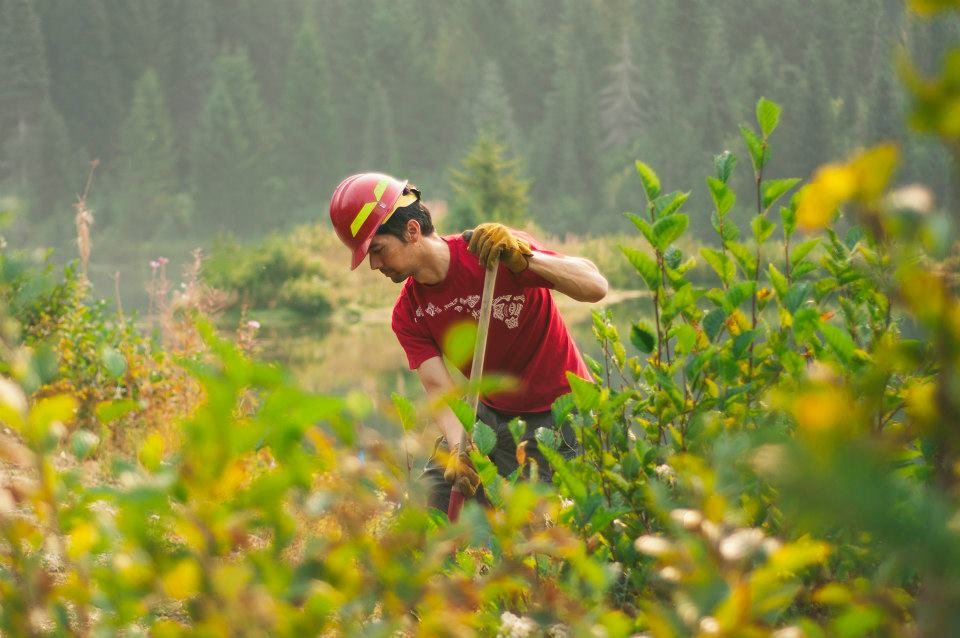
Two wildlife underpasses are under construction just east of Snoqualmie Pass on Interstate 90 in Washington State, and what better way to entice wildlife to use the underpasses but by restoring native plants! The Gold Creek valley is a vital north-south wildlife corridor in Washington’s Cascades Range. It is also a tremendous recreational asset, providing an iconic picnic spot, interpretive trail around Gold Creek pond, and launching pad to the Alpine Lakes Wilderness. Over the years, many people have loved and used this area, leaving it trampled of native vegetation and chock full of invasive plants. Conservation Northwest began working with volunteers there in 2009 to reverse this trend by planting native trees and removing invasive species.
Now Conservation Northwest aims for bigger change as they plant thousands of native plants into a concentrated area around the picnic tables and pond. Your gift helped with their planting day, which took place on October 13. Thank you for your generosity!
Read more »
Volunteers sacrifice own time to help document and protect wildlife
posted October 22, 2012
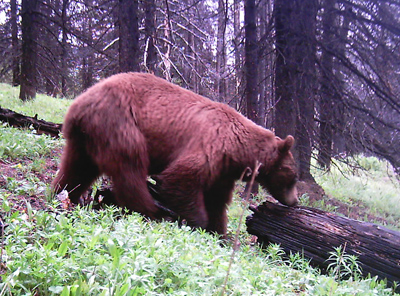
Your generous gift is sponsoring volunteers like Nevada and Mike, both of whom are on Citizen Wildlife Monitoring teams focused on detecting grizzly bears. The camera that capture this image is located on the northeast flank of the Pasayten Wilderness, located in the Okanogan region of Washington State.
This location has been selected for the past four years by the advisory council of biologists at Conservation Northwest to monitor for grizzly bears due to previous sightings and excellent habitat. The Iron Gate entrance into the Horseshoe Basin of the Pasayten lies within critical core habitat for gray wolves and Canada lynx as well. Nevada and Mike have volunteered for several years now, and are well suited to find habitat off of the beaten trail. They will appreciate the sponsorship of their team as they make the long drive to maintain these cameras from the Seattle area.
Read more »
Tracking of wildlife informs future conservation initiatives
posted October 22, 2012
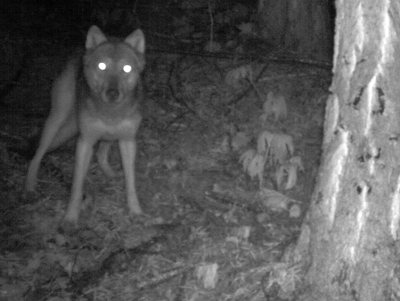
Your generosity sponsors a volunteer on one of our Citizen Wildlife Monitoring teams who is placing cameras in the Teanaway area. The team is led by experienced volunteers Amy and Mike and is focused on the detection of gray wolves. Located just northeast of Cle Elum in Washington’s Cascades, Teanaway is rich with a large diversity of wildlife, from elk to black bear to foxes to cougars and the Teanaway wolf pack. Last June, the state confirmed this pack (with the help of this photo) and Conservation Northwest has been working to see if the pack is breeding (it is) and if wolves from this pack will disperse southward. Knowing how many packs are in Washington is an important step in the recovery of this native species. Thank you, MSAF, for your support.
Read more »
Wolf community can continue to grow because of range riders
posted October 22, 2012
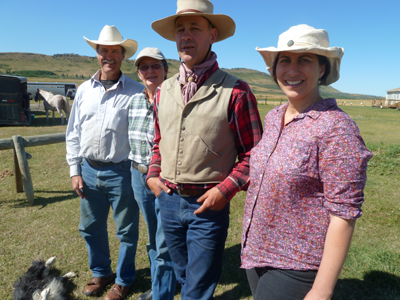
Your gift helps Conservation Northwest’s Jay and Jasmine work with ranchers in eastern Washington who are learning to live with wolves after a 70-year absence.
Hiring a range rider is one effective tool a rancher can use to decrease the vulnerability of cattle to wolf attack — range riders keep the calves and yearlings gathered in small herds, as opposed to widely dispersed across the range and monitor the wolves in the area. This takes coordination among the ranchers, the managing wildlife agencies, and the range riders.
In Alberta, up to 40 ranchers belong to a cooperative that covers 4,000 square miles. They hire several range riders and have developed a carcass pick-up and composting program. Last year these 40 ranchers lost zero cattle, even with many wolf packs living in the region. In the Montana cooperative similar results are being reported. They also do a community winter wolf tracking effort that accurately determines the number of packs and wolves they need to plan for the next grazing season.
Thank you, Maarten, for helping farmers and wolves live together in a safe and positive manner!
Read more »
Rocky Mountains farmer has lost zero cattle thanks to range riders
posted October 22, 2012

Washington is now home to eight confirmed packs of wolves and Conservation Northwest expects that number to grow over the next decade. With wolves here to stay, they are helping implement the state’s management, adopted last December, by providing tools to ranchers so that livestock and wolves can avoid conflict. This is a vital part of making the plan work on the ground. Conservation Northwest’s Jasmine reports on her time in Longview, Alberta:
“Joe has been managing a ranching cooperative on the eastern slopes of the Rocky Mountains, just outside of Longview, Alberta for the last decade. The livestock summer in high mountain country and winter on lower
range-land, grazing in areas where several wolf packs also live. When I asked Joe if he has lost a lot of calves to wolves, he could scarcely remember the last time it had happened. He attributes his success to a unique collaboration of 40 ranchers who have joined together to share their manpower and take turns riding one another’s cattle. Assisted by biologist Tim of the Mountain Livestock Cooperative, they are implementing a groundbreaking program that aims to manage cattle so that they mimic the defense behaviors of natural prey such as bison. This means that they ride with their cattle at least once a day and try to keep the herd together in larger groups. Joe explained that human presence itself is really effective at deterring wolves. In fact, since the project began, they have had no cattle lost to wolves.”
Your donation helps hire a range rider for one affected ranch. Range riding is a tool that helps replace the feeling of “helplessness” with the knowledge and determination that “something can be done” where wolves and cattle overlap. Thank you, Alyce for protecting the livelihood of farmers and the survival of wolves.
Read more »
Canada lynx are returning to the area with your help
posted October 22, 2012
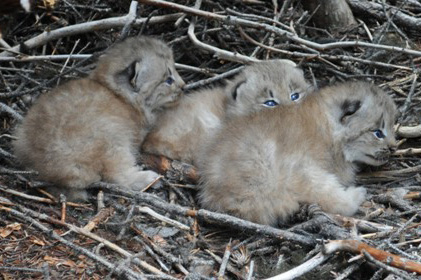
Thank you, Peter, for funding the purchase of a 15 acre conservation easement for habitat protection on the Gotham Ranch, which is situated near Colville National Forest in the northeastern corner of Washington State.
In the 1970’s, two trappers killed dozens of Canada lynx in the Kettle Range, which stretches from British Columbia to Washington State. This dealt a lethal blow to the lynx population and it is still struggling to recover from decades later. In 2007, Conservation NW staffer Derrick was backcountry skiing on the Kettle Crest when he and his ski partner, a retired forest service employee, documented large cat tracks in the snow. They followed the tracks towards the ridgeline and Derrick’s ski partner caught site of what he identified to be a Canada lynx. This sighting is one of several in recent years in the Kettle Range that motivates ongoing monitoring and recovery efforts.
Conservation NW is raising money for a conservation easement on private land (the Gotham Ranch) that lies in prime Canada lynx habitat. Your gift will provide a protected corridor to these animals. Thank you for your generosity and commitment to Pacific Northwest wildlife.
Read more »
Protected land will provide wildlife an avenue for survival
posted October 22, 2012
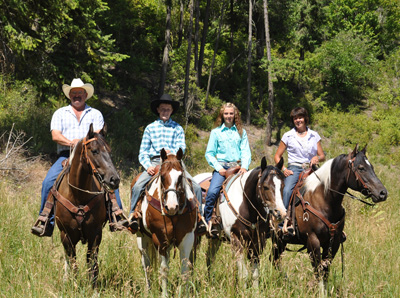
Thank you, Steven, for funding the purchase of a 15 acre conservation easement for habitat protection on the Gotham Ranch, which is situated near Colville National Forest in the northeastern corner of Washington State.
This land you helped purchase not only benefit wildlife such as lynx; they also help families stay on the land and not have to sell it for development or resource extraction such as gold mining. The Gotham family may be among the first ranchers to benefit from a “High-Country” beef label which will help consumers support ranchers that are, in turn, supporting vital wildlife habitat.
Your generosity, Steven, supports the Gotham family and protects wildlife on their land!
Read more »
’Walter Wolverine’ moves freely
posted October 22, 2012
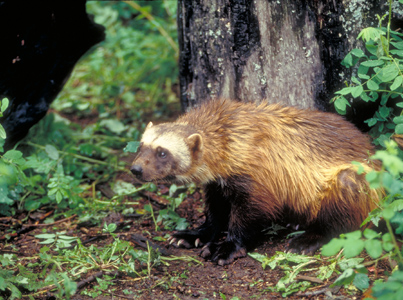
Thank you, Floyd, for helping purchase a 15 acre conservation easement for habitat protection on the Gotham Ranch, which is situated near Colville National Forest in the northeastern corner of Washington State.
Wolverines traverse hundreds of miles in pursuit of mates, food, and the proper habitat at the right season. Thanks to your support, when “Walter Wolverine” (pictured here) feels the urge in the spring, he and his progeny will be able to freely move between the Cascades and Rockies as they please. This increases their chances of survival. The wolverine tracks your grandchildren see in the Cascades one day may be a positive impact of this conservation easement.
Thank you, Floyd, for giving the “Water Wolverine” adequate room to roam.
Read more »
Guthrie volunteers to monitor critical wildlife
posted October 22, 2012
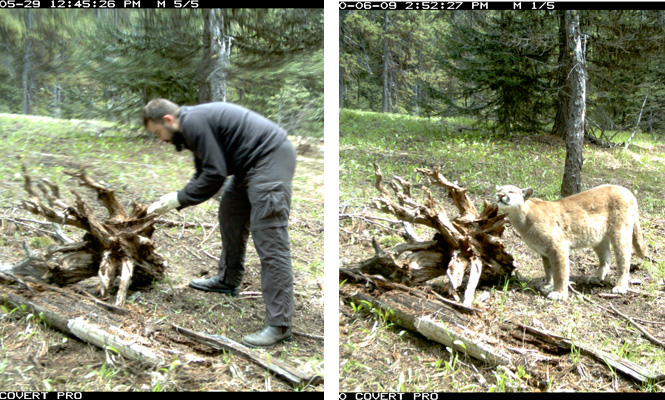
Thanks for your support of a Citizen Wildlife Monitoring Program volunteer. Your gift supplies a volunteer with batteries, bungee cords to hold the cameras on the tree, new memory cards, and lure to scent the site and attract animals.
You will help someone like Guthrie, who documented the potential western end of the range of the Teanaway wolf pack in a very important area for a variety of species of wildlife. He recalls an exciting experience he had in 2010. Shortly after installing his cameras, he reviewed the images. The first image showed Guthrie applying a lure to a stump. The very next image was of a cougar rubbing its head on the exact same spot. “I have never seen a wild cougar, so it was exciting to see pictures of us standing in the exact same place,” Guthrie said. “It’s just great to know these animals are out there, and to see what goes on once the people leave the forest.”
Thank you for helping Guthrie monitor wildlife in the Pacific Northwest!
Read more »
